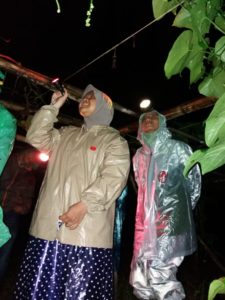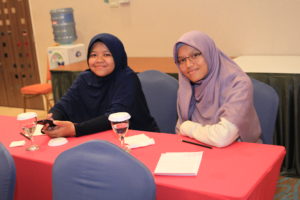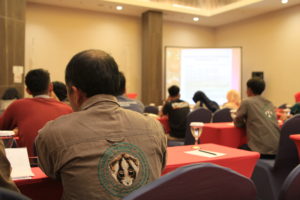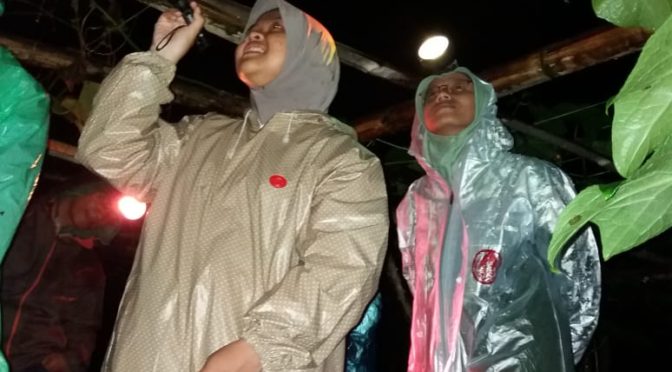Here at LFP, no week is the same. In this week’s blog, Adella, a new volunteer, tells us about her experience of the slow loris release workshop we led last week, bringing together NGOs, scientists and government organisations to discuss strategies, share knowledge and talk all things slow loris. Take it away, Adella!

Last week, LFP held a workshop and training of slow loris at Fave Hotel Ballroom, Garut and in Cipaganti village. The event was held for two days on Monday until Tuesday, 20-21 January 2020. The first day of activity was filled with workshops who attended by various conservation institutions in West Java. The workshop was filled with a variety of topics about the Javan slow loris which is divided into four sessions; the first session was about the protection of Javan slow loris, the second session was about slow loris ecology, the third session was about captive lorises, and the fourth session was about slow loris release.
In the first day, I was following the workshop as a volunteer and I was very pleased to be part of this event because from this event, I can meet with many great people and experts in the field of animal conservation. On this first day I followed half of the event sessions because in the previous session I was serving as a guest desk keeper. Although I only followed half the session, from this workshop event I gained a lot of new knowledge and science that I never had before.

The second day was filled with slow loris monitoring training in the field. I think that the second day was the most enjoyable day for me because on that day I could join with the great conservationists for the monitoring of slow loris in nature. At that time I participated in a monitoring with one of the tracker named Bang Adin and found Lupak, a loris who lives close to Cipaganti. The area is a pumpkin and tea plantation which is also the burial area for people in the village. This was a very pleasant and thrilling experience for me! There, we found three slow lorises, one collared slow loris named Lupak and two un-collared slow lorises. According to the explanations by Bang Adin one of un-collared slow lorises was about 7 months old and the other was an adult slow loris that usually sleeps in the same tree as Lupak.

This was my first experience following an event about slow lorises and how to monitor slow lorises in the field. I was very pleased with this event and I also got a lot of experience and knowledge that I would not be able to get in my lectures at university. And also this is a very interesting experience because I can have a lot of discussions with wildlife conservation activists. Thank you for the experience! 🙂

